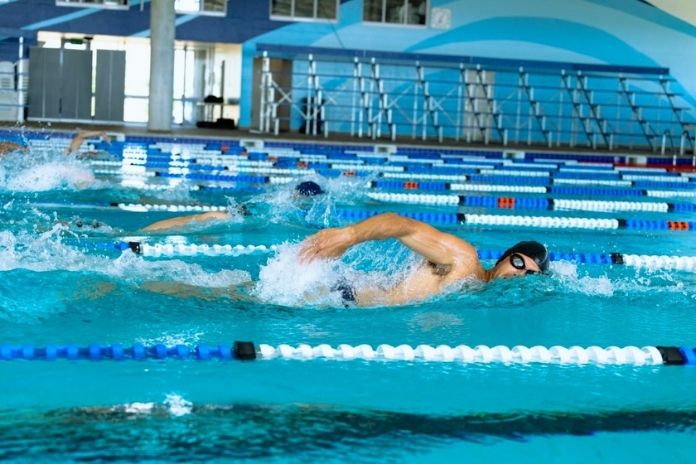Swimming is considered one of the healthiest sports. But which style is ideal for losing weight? What are the advantages and disadvantages of freestyle, front crawl, breaststroke, and backstroke? Our overview will help you get the most out of your training.
Swimming makes you slim. And strong. And keeps you healthy – that is well known. But which type of swimming brings the fastest results? Which swimming style uses the most muscles? Which one lasts the longest, and how do you burn the most calories in the water?
We examined the fitness factor of the three most common swimming styles: crawl or freestyle, breaststroke, and backstroke. We leave out the elegant, technically demanding discipline dolphin: Only very few master it so well that they can cover longer distances.
The Right Water Temperature For Fat Burning
If swimming training is about losing weight, the water temperature is also relevant. At 23 to 26 degrees, you can complete more extended units in a relaxed manner. If the water is only 15 degrees, you won’t be able to stand it for long.
However, thermogenesis, i.e., the production of heat through metabolic activities, is boosted so that our body temperature does not drop.
This, in turn, accelerates fat burning – however: you shouldn’t freeze for long. It’s neither fun nor does it increase motivation.
Freestyle
Technique And Muscles
The alternating arm strokes underwater and the forward movement of the arms over water are typical when crawling. The chest, shoulder, and upper back muscles are particularly challenged in the pulling phase underwater. The leg kick from the hip strengthens the thighs and the lower back, and the gluteus maximus. The straight abdominal muscles support a stable position in the water.
Calorie Consumption
A person weighing 70 kilograms uses about 440 kilocalories per hour to crawl at a slow pace and about 855 calories at a fast pace.
Fitness Factor
The dynamic, rhythmic swimming style demands many muscle groups at the same time. Scientific studies show that 50 percent of the strength is distributed in the arms and shoulders, 30 percent in the legs, and 20 percent in the torso.
Overload Hazards
Neck tension threatens when the head is only turned to one side to breathe.
ALSO READ: BYE-BYE BELLY FAT: 7 TIPS ON HOW TO LOSE BELLY FAT WITH SWIMMING
Conclusion
Perfect swimming style for long-term training easy on the joints: the high-calorie consumption and the many muscle groups used to make the freestyle the ideal swimming style, even for beginners. Good mobility in the shoulder area facilitates an effective arm pull – and you will quickly see progress in the water.
Breaststroke
Technique And Muscles
The arms perform a robust pulling motion underwater to support the hands. The shoulder muscles, especially the latissimus, are also strengthened intensively and synchronously.
The leg kick is highly complex; on the one hand, you push yourself off the water; on the other hand, you pull your legs forward against the direction of swimming. In particular, the front and back of the thighs are strengthened.
Calorie Consumption
A person weighing 70 kilograms consumes around 300 kcal (slow) or 670 kcal (fast) per hour doing chest style (slow/fast).
Fitness Factor
If you perform the breaststroke technically correctly, it is the more energy-intensive and technically demanding variant than the gullet or backstroke style.
Overload Hazards
If you don’t dip your head underwater when you pull your arm, you may experience severe tension in your neck and a hollow back. The knee joints sometimes suffer from the joint-stressing spreading movement when kicking the leg.
Conclusion
Often used swimming style, but mostly executed technically wrong. Many muscle groups are trained if you lower your head and do arm pulls and kicks powerfully.
Backstroke
Technique And Muscles
The backstroke is particularly good for strengthening the back muscles and buttocks. In addition, excellent flexibility and stretching are necessary for the shoulder area. The arms generate most of the propulsion, which strengthens the muscles.
But the hips and thighs are also strengthened by the paddling leg kick. The abdominal muscles stabilize the swimming position.
Calorie Consumption
A person weighing 70 kilograms consumes approx. 230/510 kcal/hour doing the backstroke (slow/fast).
Fitness Factor
Backstroke is challenging over longer distances because you rarely have your closed track. To train the back technique effectively, mobility in the shoulder area must be excellent.
Overload Hazards
If the lower core muscles are not strong enough, the buttocks often sag and slow down the swimming movement.
Conclusion
If you have weak core muscles, you can strengthen your muscles by swimming backstroke, but the position in the water relieves your spine and neck at the same time.

